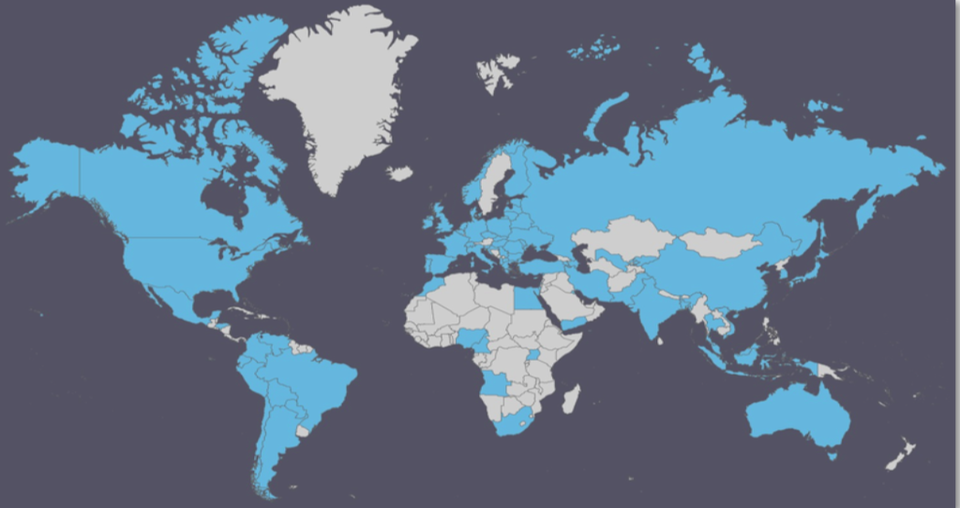COMPANY
INSIGHT
About Our Company
TELEMED was started ат 1992. A year after we began to produce PC based ultrasound scanners. Since 1995 our partnership TELEMED helps OEM manufacturers integrates ultrasound components in their own products. Our scanners are compatible with any modern Windows-based computers. Quickly growing performance of modern notebooks in combination with a very affordable price allow these platforms to use capabilities of personal computers for processing of ultrasound signals in real-time, providing additional features which are currently available only for top-class equipment. Not only a number of signal and image processing modules, but also control functions has been moved from hardware to software.
Adopting a variety of state-of-art techniques such as advanced focusing, wide bandwidth probe technology, multi-beam processing, novel filtering algorithms, TELEMED PC-based ultrasound systems are equipped with the following imaging modes: B, M (B+B, B+M), Real Time Zoom, Spectral and Color Doppler modes. Very high capacity cineloop module provides capability to record as long clips as allowed by PC memory and then save clip to the hard drive or CD-ROM. An optimum frequency of broadband probes can be selected from up to six frequencies to ensure the best image for each examination situation.
Flexibility of these “true PC-based” scanners means that advanced technologies such as 3D imaging, wide field-of-view imaging, and real-time speckle reduction can be easily integrated, while enabling innovative and evolving solutions to be effortlessly added as customer`s future needs change.de
International
Telemed has a wide network of exclusive distributors and representatives: our equipment is sold in over than 75 countries in the World, we have representatives in 30 countries
OUR CUSTOMERS RANGE FROM INDIVIDUAL DOCTORS ALL THE WAY TO LARGE INTERNATIONAL MEDICAL DEVICE FIRM

Below are listed basic features of TELEMED software and hardware that may be useful for scientific research in industry, medicine and ultrasound-guided navigation.
"Echo Wave II" Ultrasound Scanning Software
Remote control. “Echo Wave II” unique design allows remote access not only to real-time ultrasound examination but also to controls which enable tele-consultations and tele-diagnostics.
Versatility. “Echo Wave II” can control all ultrasound scanners produced by TELEMED, flexible installation routine simplifies installation. User just need to select which ultrasound system(s) required to support.
All-in-One package. All functions are included, no paid add-ons and calculation packages.
Although Echo Wave II software is mainly used for traditional ultrasound examinations in private practice and clinics, it also has some features that can be used for research in universities and other scientific organizations:
Batch image Processing: if one need to scan many images, measure the same distance, area or other parameter on them, save this data and further process these measurements using other software, then you can save images/reports in XLSX (Excel) file and then use its "Data" sheet with measurement results.
Control by External Application: From external application one can force "Echo Wave II" freeze/run, save file, load file commands, change patient information. These actions can be done by sending appropriate command strings using Windows messages.
Cine-to-Files: If it’s required to save recorded ultrasound cine to separate frames, possible to do that by simply selecting "PNG multiple images" (or BMP, JPG) file format in "Echo Wave II" "Cine Save As" dialog.
Beamformers Synchronization. For some advanced applications single beamformer may be not enough. In such cases to the same computer it’s possible connect two beamformers with identical probes and do recording using both beamformers at the same time, at different scanning planes.
For more advanced research you may want to write your custom ultrasound scanning software and do not rely on "Echo Wave II". In such cases customer can request Software Development Kit (SDK).
"Ultrasonography for Windows II (Usgfw II)" Software Development Kit
If for a research ne need more control over ultrasound, want to access not only ultrasound frame data but also scan-lines of each frame, or just want to write your custom ultrasound scanning software, then Usgfw2 SDK is required. It is distributed for free after signing NDA agreement.
The SDK contains sample code that demonstrates how to access ultrasound data and control ultrasound scanner in different scanning modes. For high-level programming can be used C#, VB, Delphi, C++ or other programming language that supports COM. For access to low level ultrasound data is required knowledge of C++, COM and DirectShow.
Ultrasound Keyboard and its SDK
"Echo Wave II" can be controlled not only using computer mouse or keyboard, but also using special ultrasound keyboard LB-2.
If you want to use LB-2 keyboard to control your custom software that does ultrasound scanning and controls other equipment, you can request Ultrasound Keyboard SDK.
